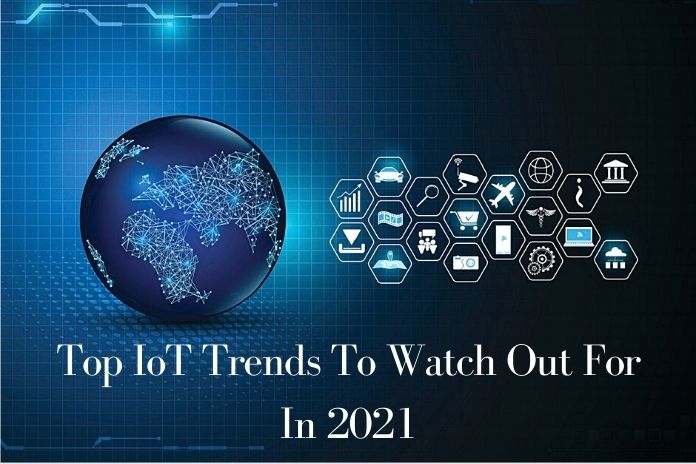Gartner predicts that the enterprise and automotive Internet of Things (IoT) sectors will integrate up to 5.8 billion endpoints by 2021. Utilities are the leading users of IoT endpoints. They are expected to reach 1.37 billion endpoints worldwide in 2021. What is the IoT in 2021? Let’s take a look at the top Internet of Things trends:
From Consumer To Industrial IoT (IIoT)
While this is already one of the significant trends in 2020, there will be an even more substantial shift from the consumer to the Industrial Internet of Things (IIoT) in the coming year. Instead of being limited to the increasingly diverse consumer market, investment activities will focus on industrial applications.
This is particularly true for investments to build new, robust infrastructures and tackle agriculture, transport, and telecommunications problems. Innovative factory applications will receive special attention. The increased use of wearables – also in connection with mobile devices – will give both production and managers a better picture of the machine status and local safety conditions. Innovations in predictive maintenance will remain in trend.
From Information To AI Solution Proposals
So far, the global focus has been on data collection from IoT devices. The focus is now on building connectivity, data collection, tracking, reporting and creating the conditions for analysis. For 2020, however, it is forecast that the focus will shift from data collection to intelligent data management.
IoT devices will provide information about their environment and become increasingly important when it comes to the decision-making process. AI is expected to play a more active role in interpreting data. Even if the final decisions may still be in the hands of humans, knowledge is now scheduled from IoT devices.
Here we can experience a shift in the perception of IoT devices: from mere devices that provide observations about their environment to active participants in the design of this environment. The devices will gradually begin to have a say in decision-making processes. After all, the devices could be far better able to understand the systems they are embedded in than any human intervening.
More Data Protection And Security
IoT providers establishing themselves in areas such as healthcare and finance will face even more significant regulatory hurdles. This applies in particular to the handling of personal data. Protecting customer data, solving data storage problems and complying with data protection laws will continue to be top priorities. Efforts to standardize and enforce increasingly stringent data security regulations are expected to intensify in the long term.
In the EU, GDPR brings a multitude of obligations for providers, as the entire lifecycle of identities and all associated attribute data must now be managed. A holistic view of the whole spectrum of implications surrounding a product will lead to a higher awareness of personal data and all related compliance requirements. The Internet of Things will also continue to face complex security challenges that require continuous renewal of security efforts.
The diversity and distribution of the Internet of Things make devices particularly vulnerable to hacking.
Addressing security concerns and implementing robust security measures, and educating users on security issues will become a top priority for vendors. Joint efforts to be more transparent in dealing with data protection and security issues will be on the table. These are no longer viewed as isolated problems for one vendor or company but rather as global concerns that endanger everyone.
Even More IoT Edge Computing In Use
Gartner predicted as early as 2018 that edge computing and cloud computing would become complementary models in the coming years. Edge computing processes the data generated by IoT devices closer to the place where the data is generated. Instead of sending the data to cloud infrastructures, the data processing occurs close to their place of origin. In this way, you can avoid data loss and accelerate local data analysis.
By moving away from data centers, edge computing enables various services and tasks outside of the cloud. In particular, the relocation of IoT management leads to better transmission rates and faster response times. IoT endpoints at the edge process the data, which is then transferred to storage repositories, corporate data centers, etc. Parallel to this development, it is to be expected that the market for IoT platforms will grow in the coming year.
Several smaller providers will enter the segment. And even if companies wouldn’t give up the cloud entirely in favor of edge computing, there is an increasing tendency to use more edge computing.
From Large Companies To Small IoT Developer Groups
Leading tech giants have launched massive IoT offerings. But the trends show that the future of the Internet of Things is not one of the giants. When it comes to taking the IoT to the next level, we might also turn to more minor contributors. They have the necessary versatility and growth mentality to test the limits of IoT innovation.
These can be formal or informal groups of developers and technicians or employees on an IoT platform creating a market-ready end product. These can also be compact companies that focus on a single solution.
The trends in the development of Internet of Things platforms will continue to focus in the years to come.
Also Read : Internet Of Things (IoT) – What It Is And How To Use It Safely

